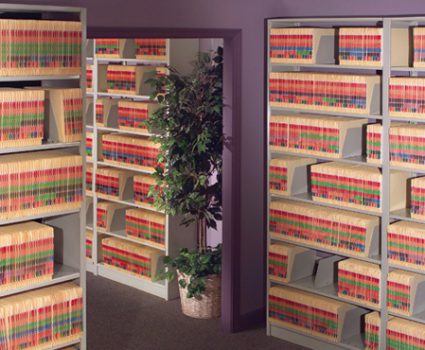
Four space planning mistakes (and how to avoid them)
How do we make the most effective use of space? This is a continuing challenge for records managers, who are often under pressure to accommodate more documents in a fixed or shrinking storage footprint.
When space becomes an issue, it is often the result of decisions or mistakes made a lot earlier.
To help you avoid running into space issues, here are four common space planning mistakes and tips for how to avoid them.
1. Ignoring future needs
Is relocation in your company’s future? Do you anticipate a flood of new hires? Is there a pending merger? Any effective records management plan should budget for these types of upcoming filing requirements. This will ensure that your storage areas can accommodate both current and anticipated file volumes. To help discover future needs, you will need to work with your business partners to understand where the business is going and how you will be required to support it.
2. Not dealing with dead weight
Every collection accumulates dead weight over time. This can include duplicate copies of files, outdated drafts, non-records, and other files that no longer have any business value. Unless your records management plan allows for regular file reviews and purges, then your collection will eventually take up a lot more space than is necessary. To avoid this, make sure your plan includes regular purges supported by an up-to-date retention schedule. When developing your retention schedule, be sure to research the statutes, regulations and industry standards that apply to your company.
3. Irregular or inconsistent records destruction
Space can become an issue in organizations even when they have a well-documented retention schedule in place. When the retention schedule isn’t applied on a regular or consistent basis, you can end up carrying a large number of expired records. To keep expired documents from piling up, you need to establish an ongoing process for identifying, pulling, and destroying expired records. The process must also include steps to document the destruction process when this is required by law.
4. Working in isolation
Every space planning program requires input and a coordinated approach from different departments in the organization. If your file room acts as a repository of documents from multiple business units, you can work with those units to start managing the document stream before files even make it to the shelves. This will help you reduce the buildup of duplicates and other unneeded documents that put pressure on your storage footprint. Planning sessions, status meetings, and staff education are all important tools to help you manage space in a cooperative and coordinated way.
What’s next?
For more tips on optimizing your storage space, download our mobile shelving buyer’s guide.





